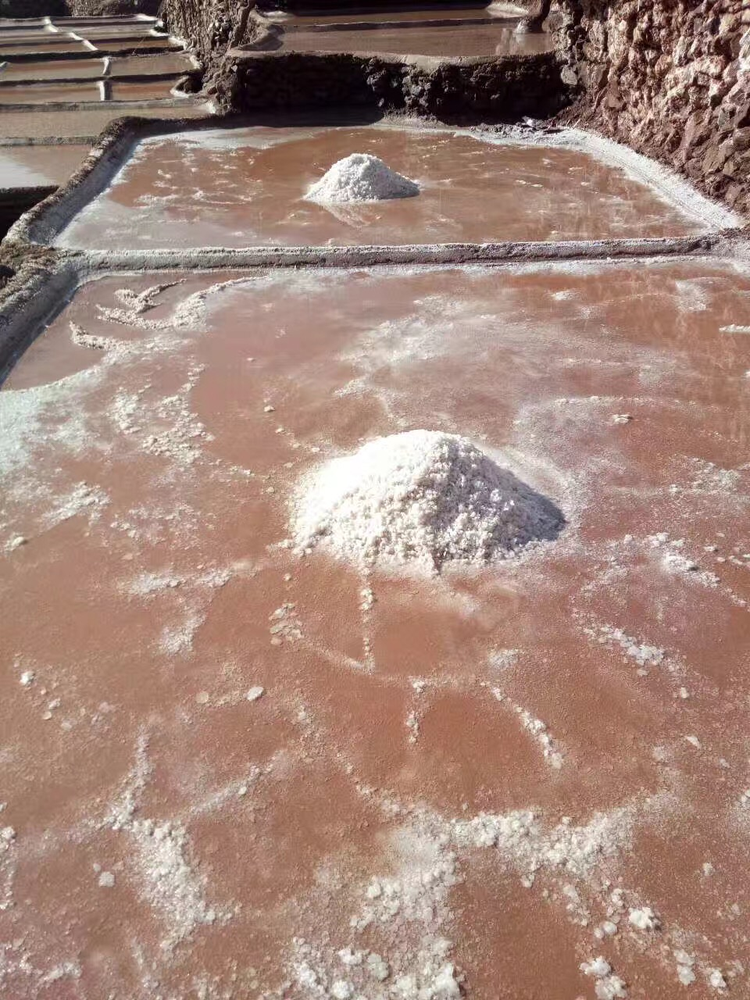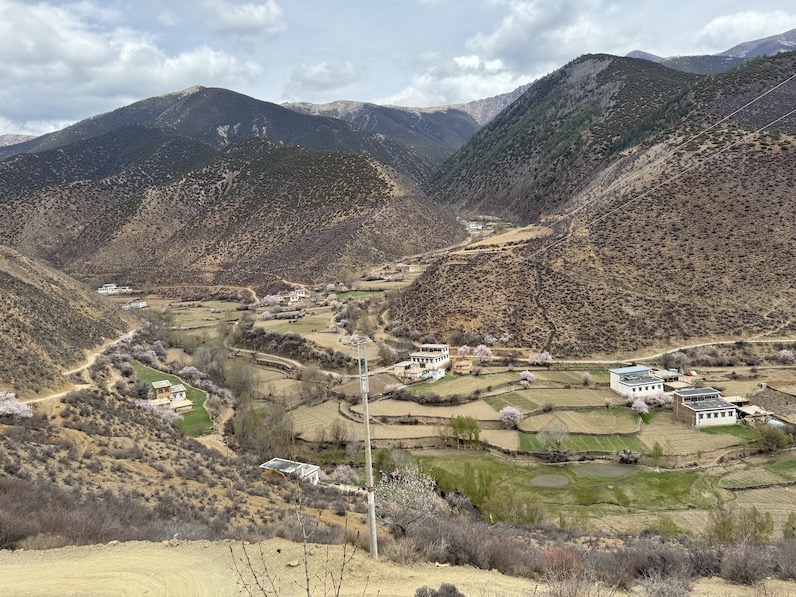
Do you stop to consider where your salt comes from, and how it is formed?
Salt is one of the most common substances on earth, and in eastern Tibet, where I grew up, salt production is a way of life. We harvest it using the solar method, the oldest and most traditional way of producing salt, and spring – the driest and windiest time of year – is harvest season.
My hometown area is famed for its natural salt flats, shallow ponds where salt water is captured, and the sun and wind evaporate most of the water. Salt production has bolstered our local economy for centuries. Many of my friends and family members are involved in the industry in some way. The pictures in this blog post were taken by relatives who work the salt flats near my home.
For now, this way of life is alive and well, but the practice may not continue. The Chinese are building dams along the Mekong River (which originates in Tibet), and this changes water levels in the area.
Water is critical in salt production. A slight rise or drop in the water table makes it difficult or impossible for local people to collect brine (a solution with a high salt concentrate) from the wells.
Traditionally, the brine is collected by women. They use woven baskets to haul it on their backs from the riverbed up above the salt flats. Here they pour it into large pools (see picture above), and then decant it onto the flats.
Every three to four days the women return to sweep up the remnants of salt on the flats. The men then take the salt to markets near and far.

In my hometown, we take it for granted that we can season our food with some of the freshest and purest forms of salt, which contain an abundance of minerals and elements.
Here in Oxford, we cook with organic fine sea salt, and our chilli dips are seasoned with Himalayan pink salt. We never use “refined” table salt, which has been stripped of its minerals during processing. Don’t say we don’t look after you!
#tibet #taste #spices #yerma #garlic







